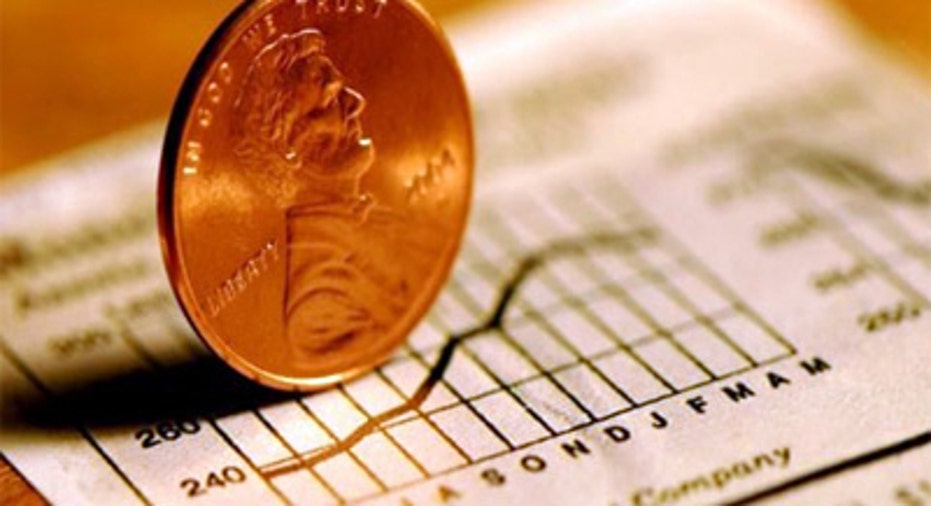Get More Bang for Your Buck With No-Fee ETFs?

Investments No-Fee ETFs
It doesn't cost a lot to trade online, but some products are offered free of commissions. That includes some exchange-traded funds, or ETFs. Recent years have seen a proliferation of fee-free ETFs as online brokerages battle for investing dollars.
Commissions of only a few dollars on ETFs can really add up for investors who want to dollar-cost average, or invest a certain amount of money on a regular basis -- for instance, with every paycheck. So no-fee ETFs enable them to invest regularly without worrying about incurring regular costs.
Investors also can choose to have dividends reinvested for free in most cases.
"Free dividend reinvestment facilitates the compounding that can turbocharge long-term returns," says Bankrate's chief financial analyst Greg McBride, CFA.
Benefits of no-fee ETFs
Investment costs are one variable that investors can control. Slashing costs can be particularly beneficial to small investors without a lot of money to invest on a regular basis.
"Without commission, you can buy as few as one share at a time whenever you get some spare change in your brokerage account," McBride says.
Paying less to invest leaves more money in your investment, which can translate to greater returns in the long run. Commissions aren't the only fee to worry about, though. Keep an eye on other costs to make sure you're getting the most bang for your investment bucks.
Expense ratios
Most ETFs have relatively low expense ratios as they typically passively track an index. Indexing is cheaper than actively managing a fund or ETF since there's no team of specialists on the payroll researching and trading stocks. But even among relatively low-expense ratios in plain-vanilla ETFs, the fees vary.
"A trading fee is less relevant than the overall expense of owning a fund. The expense ratio is more important in cost savings," says Gary Gordon, a CFP professional and president of Pacific Park Financial in Ladera Ranch, California.
Liquidity
Investment costs don't end with the expense ratio. There could be a hidden expense between the price at which you can buy the security and sell it, known as the bid-ask spread.
"There could be liquidity concerns for some of the ETFs if they don't trade a lot of shares every day," says Phillip Christenson, CFA, financial planner at Phillip James Financial in Plymouth, Minnesota. "When you go to buy them, you are not paying the transaction cost, but you are paying the bid-ask spread. And you may be paying up if there aren't a lot of shares being traded that day."
He points to the WisdomTree Global Natural Resources ETF on E-Trade, with a recent spread of 5.25 percent. At the time, the last price listed was $21.37 with a bid of $20.40 and ask of $21.50. "If you purchased it at the market, you would pay $21.50 per share. If you sold at the market, you would receive $20.40," Christenson says. The bid-ask spread of that ETF subsequently widened.
Using limit orders to specify the price at which you'd like to buy or sell can mitigate the impact of large spreads. Specify the price you'd like to pay or be paid and don't budge until it gets there. The only downside to this strategy is that the market may never hit your specified price.
Beware of nudges
The lists of commission-free ETFs vary among brokers. Some offer only the house-brand ETF while others let investors choose from an array of providers.
For instance, Vanguard offers about 67 of its own ETFs with no commission when you go through that firm to trade.
"Getting an incentive to use one fund and a disincentive to use another is problematic, since investors may not be choosing the right fund in the first place," says Gordon.
"One would benefit the most in his or her investing endeavors by having free trade access to an extensive list of highly liquid ETFs from a broad array of fund families," he says.
The most popular and highly traded ETFs may never land on a no-fee list. "You don't want to sound cynical, but when they are forming (no-fee) groups, they are pushing the investor into a less-followed fund," says Steven A. Lifland, Ph.D., a professor of accounting and finance at High Point University in High Point, North Carolina.
For instance, if you're interested in buying an ETF that tracks a small-cap index such as the Russell 2000, the iShares Russell 2000 ETF is by far the biggest with an average daily trading volume of nearly 50 million shares. It's in the top five most popular ETFs, according to the website ETF Database. But it can't be had for free.
Fee-free ETFs may not last forever
Another consideration is the potential for the commission-free list at your broker to change. Last year at Fidelity, investors were given a grace period during which they could sell for free the ETFs banished from the no-commission list, ETF.com reported.
Of course, selling an investment can be a taxable event.
"If my asset falls out of the list, then I would be forced to recognize capital gains," says Lifland. The other option would be to keep the formerly free ETF and pony up the commission upon selling.
For investors with a plan, no-fee ETFs are a boon. Investors without a plan should get one before they buy any investments.
"Come up with your investment plan first and then find the best investment vehicle. Don't plan your portfolio around no-cost ETFs," says Christenson.
Copyright 2014, Bankrate Inc.



















